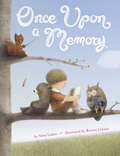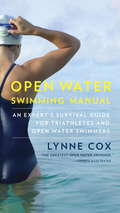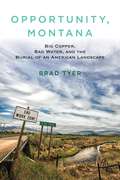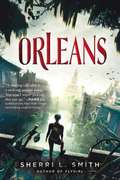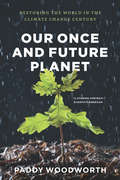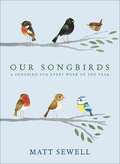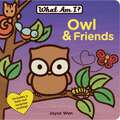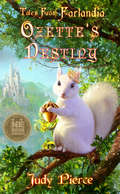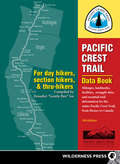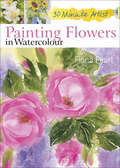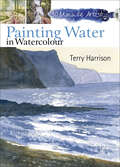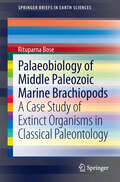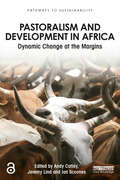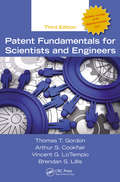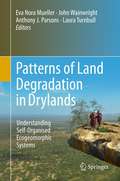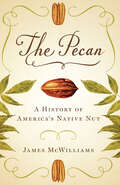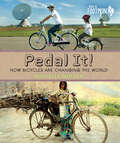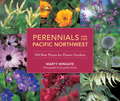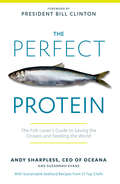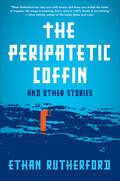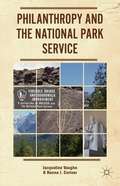- Table View
- List View
Once Upon a Memory
by Renata Liwska Nina LadenDoes a feather remember it once was a bird?Does a book remember it once was a word?When a feather drifts through a child's window, a magical journey begins. As the boy follows the feather, he is swept away to a world filled with adorable animals, where fantasy and reality come together in surprising and playful ways. From the cake that once was grain to the ocean that once was rain, whimsical "before" and "after" scenes offer readers a peek at the world as seen through the eyes of a curious child, ultimately asking the question, "What will you remember?" Nina Laden's poetic and cleverly woven text is perfectly paired with bestselling artist Renata Liwska's captivating illustrations. Together they create a story that will keep readers enchanted long after the journey has ended.
Opal for 3rd Grade Student Edition Part Two (Mosdos Press Literature Series)
by Judith FactorAmasina was very pleased. The American doctors had decided to teach him how to carry out medical treatments used in the United States. They were also going to give him simple medical instruments and medications. He would be able to help the people of his tribe by giving injections, fluids, and antibiotics. Amasina would assist the doctors in return. He would share his knowledge about plants of the Amazon that he used to treat wounds and disease.
Open Water Swimming Manual: An Expert's Survival Guide for Triathletes and Open Water Swimmers
by Lynne CoxLynne Cox has set open water swimming records across the world, and now she has focused her decades-long experience and expertise into this definitive guide to swimming. Cox methodically addresses what is needed to succeed at and enjoy open water swimming, including choosing the right bathing suit and sunscreen; surviving in dangerous weather conditions, currents, and waves; confronting various marine organisms; treating ailments, such as being stung or bitten, and much more. Cox calls upon Navy SEAL training materials and instructors' knowledge of open water swimming and safety procedures to guide her research. In addition, first-hand anecdotes from SEAL specialists and stories of Cox's own experiences serve as both warnings and proper practices to adopt. Open Water Swimming Manual provides a wealth of knowledge for all swimmers, from seasoned triathletes and expert swimmers to beginners exploring open water swimming for the first time. It is, as well, the first manual of its kind to make use of oceanography, marine biology, and to weave in stories about the successes and failures of other athletes, giving us a deeper, broader understanding of this exhilarating and fast growing sport.From the Trade Paperback edition.
Opportunity, Montana: Big Copper, Bad Water, and the Burial of an American Landscape
by Brad TyerA memoir-meets-exposé that examines our fraught relationship with the West and our attempts to clean up a toxic environmental legacy In 2002, Texas journalist Brad Tyer strapped a canoe on his truck and moved to Montana, a state that has long exerted a mythic pull on America's imagination as an unspoiled landscape. The son of an engineer who reclaimed wastewater, Tyer was looking for a pristine river to call his own. What he found instead was a century's worth of industrial poison clotting the Clark Fork River, a decades-long engineering project to clean it up, and a forgotten town named Opportunity. At the turn of the nineteenth century, Montana exploited the richest copper deposits in the world, fueling the electric growth of twentieth-century America and building some of the nation's most outlandish fortunes. The toxic by-product of those fortunes--what didn't spill into the river--was dumped in Opportunity. In the twenty-first century, Montana's draw is no longer metal but landscape: the blue-ribbon trout streams and unspoiled wilderness of the nation's "last best place." To match reality to the myth, affluent exurbanites and well-meaning environmentalists are trying to restore the Clark Fork River to its "natural state." In the process, millions of tons of toxic soils are being removed and dumped--once again--in Opportunity. As Tyer investigates Opportunity's history, he wrestles with questions of environmental justice and the ethics of burdening one community with an entire region's waste. Stalled at the intersection of a fading extractive economy and a fledgling restoration boom, Opportunity's story is a secret history of the American Dream and a key to understanding the country's--and increasingly the globe's--demand for modern convenience. As Tyer explores the degradations of the landscape, he also probes the parallel emotional geography of familial estrangement. Part personal history and part reportorial narrative, Opportunity, Montana is a story of progress and its price: of copper and water, of father and son, and of our attempts to redeem the mistakes of the past. From the Hardcover edition.
Orleans
by Sherri L. SmithFirst came the storms. Then came the Fever. And the Wall. After a string of devastating hurricanes and a severe outbreak of Delta Fever, the Gulf Coast has been quarantined. Years later, residents of the Outer States are under the assumption that life in the Delta is all but extinct…but in reality, a new primitive society has been born. Fen de la Guerre is living with the O-Positive blood tribe in the Delta when they are ambushed. Left with her tribe leader’s newborn, Fen is determined to get the baby to a better life over the wall before her blood becomes tainted. Fen meets Daniel, a scientist from the Outer States who has snuck into the Delta illegally. Brought together by chance, kept together by danger, Fen and Daniel navigate the wasteland of Orleans. In the end, they are each other’s last hope for survival. Sherri L. Smith delivers an expertly crafted story about a fierce heroine whose powerful voice and firm determination will stay with you long after you’ve turned the last page. .
Orleans
by Sherri L. SmithFirst came the storms.Then came the Fever. And the Wall. After a string of devastating hurricanes and a severe outbreak of Delta Fever, the Gulf Coast has been quarantined. Years later, residents of the Outer States are under the assumption that life in the Delta is all but extinct...but in reality, a new primitive society has been born. Fen de la Guerre is living with the O-Positive blood tribe in the Delta when they are ambushed. Left with her tribe leader's newborn, Fen is determined to get the baby to a better life over the wall before her blood becomes tainted. Fen meets Daniel, a scientist from the Outer States who has snuck into the Delta illegally. Brought together by chance, kept together by danger, Fen and Daniel navigate the wasteland of Orleans. In the end, they are each other's last hope for survival. Sherri L. Smith delivers an expertly crafted story about a fierce heroine whose powerful voice and firm determination will stay with you long after you've turned the last page.
Our Beautiful, Fragile World: The Nature and Environmental Photographs of Peter Essick
by Peter Essick"Our Beautiful, Fragile World" features a career-spanning look at the images of photojournalist Peter Essick taken while on assignment for "National Geographic" magazine. In this book, Essick showcases a diverse series of photographs from some of the most beautiful natural areas in the world and documents major contemporary environmental issues, such as climate change and nuclear waste. Each photograph is accompanied by commentary on the design process of the image, Essick's personal photographic experiences, and informative highlights from the research he completed for each story. "Our Beautiful, Fragile World" takes the reader on a journey around the globe, from the Oulanka National Park near the Arctic Circle in Finland to the Adelie penguin breeding grounds in Antarctica. "Our Beautiful, Fragile World" will interest photographers of all skill levels. It carries an important message about conservation, and the photographs provide a compelling look at our environment that will resonate with people of all ages who care about the state of the natural world. Foreword by Jean-Michel Cousteau.
Our Once and Future Planet: Restoring the World in the Climate Change Century
by Paddy WoodworthThe environmental movement is plagued by pessimism. And that’s not unreasonable: with so many complicated, seemingly intractable problems facing the planet, coupled with a need to convince people of the dangers we face, it’s hard not to focus on the negative But that paints an unbalanced—and overly disheartening—picture of what’s going on with environmental stewardship today. There are success stories, and Our Once and Future Planet delivers a fascinating account of one of the most impressive areas of current environmental experimentation and innovation: ecological restoration. Veteran investigative reporter Paddy Woodworth has spent years traveling the globe and talking with people—scientists, politicians, and ordinary citizens—who are working on the front lines of the battle against environmental degradation. At sites ranging from Mexico to New Zealand and Chicago to Cape Town, Woodworth shows us the striking successes (and a few humbling failures) of groups that are attempting to use cutting-edge science to restore blighted, polluted, and otherwise troubled landscapes to states of ecological health—and, in some of the most controversial cases, to particular moments in historical time, before widespread human intervention. His firsthand field reports and interviews with participants reveal the promise, power, and limitations of restoration. Ecological restoration alone won’t solve the myriad problems facing our environment. But Our Once and Future Planet demonstrates the role it can play, and the hope, inspiration, and new knowledge that can come from saving even one small patch of earth.
Our Songbirds: A songbird for every week of the year
by Matt SewellIn this beautiful follow-up to 2012's hit, Our Garden Birds, street artist Matt Sewell offers more watercolours and quirky descriptions of British songbirds.In Matt's world, the peewit sings the blues, and the bittern fills his neck 'like a tweed pair of bellows'. Distinctive and enchanting, with a songbird for each week of the year, this delightful gift book will appeal to birders, children and adults, and art and design fans alike.
Owl & Friends
by Joyce WanI play with the squirrels, sing with the birds, and have a picnic with the deer. What am I? Children are asked to figure out just who does all these things in this delightful, bright board book. The last spread reveals it's a big, strong tree.
Ozette's Destiny: Tales From Farlandia (Tales From Farlandia #1)
by David M. F. Powers Judy Pierce Natalia Nesterova Silvia HoefnagelsAfter being crowned the queen of Farlandia, the white squirrel Ozette finds herself in the midst of a struggle to save the endangered and enchanted forest where she now lives. Can Ozette round up the help she needs to preserve the rhythms of nature that make Farlandia so special? In order to accomplish this gigantic feat, the white squirrel must enter the world of deep, forest magic in an attempt to save her chosen family. But is she ready to learn the truth about the land she loves? She enlists the help of ethereal fairies, elusive elves, and her newest friend Gizmo as they find themselves in a desperate race against Boardmore, Smiley, and time. Under the guidance of Princess Abrianna and the direction of Queen Beatrix, Ozette learns more about her new home than she could have imagined. The secrets that nature holds can only be unlocked when you embark on yet another magical journey with Ozette and her enchanting friends. Are you ready to learn the truth about Farlandia?
Pacific Crest Trail Data Book
by Benedict GoThe essential, cut-to-the-chase handbook to the Pacific Crest Trail, based on the comprehensive Wilderness Press guidebooks to the PCT, has been completely updated. Packed with trail-tested features, it's useful both on and off the trail, covering pre-trip planning for resupply stops, how to set daily on-the-trail mileage goals by knowing trail gradient and the locations of campsites, water sources, and facilities, and how to easily calculate distances between any two points on the trail, and how to planning both north-bound and south-bound hiking trips.
Painting Flowers in Watercolour (30 Minute Artist)
by Fiona PeartGot a half hour? Use it to paint something beautiful with these ten quick projects.The 30 Minute Artist series is for beginners and busy artists who want to achieve great paintings in just half an hour. Here, expert artist and teacher Fiona Peart helps you build skills and confidence, and loosen up your style, by producing spontaneous, lively flower paintings in thirty minutes flat. Discover quick exercises to get you started—and then try the ten fantastic step-by-step projects, from a jug of daffodils to sunflowers to spring violas—for a delightful creative break in your day.
Painting Water in Watercolour (30 Minute Artist)
by Terry Harrison“From beach scenes to ponds, rivers to seas, puddles and streams, Terry shows how to paint water in all its beautiful painterly effects.” —Karen Platt, yarnsandfabrics.co.ukAll watercolour landscape artists need to know how to paint water, and in this book Terry Harrison excels in demystifying the painting process. Here he shares his expert advice and no-nonsense tips and techniques for producing quick, effective paintings of water. There are two or three-step exercises for painting water in all its varied moods and situations, including ripples, reflections, puddles, streams, breaking waves, choppy water, surf, bridges, riverbeds, boats, and much more. There are then ten step-by-step demonstrations that can be produced in half an hour: a misty lake, track with puddles, ford, waterfall, lazy river, stormy sea, cliffs, fisherman, sunset estuary and fishing boat.Essential painting skills conveyed through quick, lively studiesExpert art tuition from a renowned artist, for beginners, the busy artist, or those wanting to loosen up their painting styleNumerous quick exercises and ten step-by-step demonstrations in a handy, affordable ebook format“Terry demonstrates twenty-three basic exercises to build your confidence with the subject from rippled reflections to crashing waves, fast-flowing streams to sun setting on the sea.” —The Leisure Painter
Palaeobiology of Middle Paleozoic Marine Brachiopods
by Rituparna BoseFossil species appear to persist morphologically unchanged for long intervals of geologic time, punctuated by short bursts of rapid change as explained by the Ecological Evolutionary Units (EEUs). Here, morphological variation in Paleozoic atrypide morphology at the subfamily level (Atrypinae and Variatrypinae) from the Silurian and Devonian time intervals in the third Paleozoic EEU (~444-359 my) were investigated using relatively new techniques of quantitative modeling. The study explains how a group of closely related taxa in atrypide subfamilies exhibit morphological conservation through time in P3 EEU within the Eastern North America region.
Pastoralism and Development in Africa: Dynamic Change at the Margins (Pathways to Sustainability)
by Author UnknownOnce again, the Horn of Africa has been in the headlines. And once again the news has been bad: drought, famine, conflict, hunger, suffering and death. The finger of blame has been pointed in numerous directions: to the changing climate, to environmental degradation, to overpopulation, to geopolitics and conflict, to aid agency failures, and more. But it is not all disaster and catastrophe. Many successful development efforts at ‘the margins’ often remain hidden, informal, sometimes illegal; and rarely in line with standard development prescriptions. If we shift our gaze from the capital cities to the regional centres and their hinterlands, then a very different perspective emerges. These are the places where pastoralists live. They have for centuries struggled with drought, conflict and famine. They are resourceful, entrepreneurial and innovative peoples. Yet they have been ignored and marginalised by the states that control their territory and the development agencies who are supposed to help them. This book argues that, while we should not ignore the profound difficulties of creating secure livelihoods in the Greater Horn of Africa, there is much to be learned from development successes, large and small. This book will be of great interest to students and scholars with an interest in development studies and human geography, with a particular emphasis on Africa. It will also appeal to development policy-makers and practitioners.
Patent Fundamentals for Scientists and Engineers
by Thomas T. Gordon Arthur S. Cookfair Vincent G. LoTempio Brendan S. LillisThe most significant overhaul of the U.S. patent laws in decades occurred with the recent passage of the Leahy-Smith America Invents Act (AIA). Understanding the law that dictates what a patent is and how a patent is obtained and enforced, and the recent changes through statute or case law litigation presents unique challenges. This third edition o
Patterns of Land Degradation in Drylands: Understanding Self-Organised Ecogeomorphic Systems
by Anthony J. Parsons Eva Nora Mueller John Wainwright Laura TurnbullThis book explores the theory of ecogeomorphic pattern-process linkages, using case studies from Europe, Africa, Australia and North America. Sets forth a research agenda for the emerging field of ecogeomorphology in drylands land-degradation studies.
The Pecan: A History of America's Native Nut
by James McWilliamsWhat would Thanksgiving be without pecan pie? New Orleans without pecan pralines? Southern cooks would have to hang up their aprons without America’s native nut, whose popularity has spread far beyond the tree’s natural home. But as familiar as the pecan is, most people don’t know the fascinating story of how native pecan trees fed Americans for thousands of years until the nut was “improved” a little more than a century ago—and why that rapid domestication actually threatens the pecan’s long-term future. In The Pecan, acclaimed writer and historian James McWilliams explores the history of America’s most importantThis lively history by the acclaimed author of Just Food and A Revolution in Eating follows the pecan from primordial Southern groves to the contemporary Chinese marketplace to reveal how a nut with a very limited natural range has become a global commodity and endangered heirloom. commercial nut. He describes how essential the pecan was for Native Americans—by some calculations, an average pecan harvest had the food value of nearly 150,000 bison. McWilliams explains that, because of its natural edibility, abundance, and ease of harvesting, the pecan was left in its natural state longer than any other commercial fruit or nut crop in America. Yet once the process of “improvement” began, it took less than a century for the pecan to be almost totally domesticated. Today, more than 300 million pounds of pecans are produced every year in the United States—and as much as half of that total might be exported to China, which has fallen in love with America’s native nut. McWilliams also warns that, as ubiquitous as the pecan has become, it is vulnerable to a “perfect storm” of economic threats and ecological disasters that could wipe it out within a generation. This lively history suggests why the pecan deserves to be recognized as a true American heirloom.
The Pecan: A History of America's Native Nut
by James McwilliamsWhat would Thanksgiving be without pecan pie? New Orleans without pecan pralines? Southern cooks would have to hang up their aprons without America's native nut, whose popularity has spread far beyond the tree's natural home. But as familiar as the pecan is, most people don't know the fascinating story of how native pecan trees fed Americans for thousands of years until the nut was "improved" a little more than a century ago-and why that rapid domestication actually threatens the pecan's long-term future. In The Pecan, acclaimed writer and historian James McWilliams explores the history of America's most important commercial nut. He describes how essential the pecan was for Native Americans-by some calculations, an average pecan harvest had the food value of nearly 150,000 bison. McWilliams explains that, because of its natural edibility, abundance, and ease of harvesting, the pecan was left in its natural state longer than any other commercial fruit or nut crop in America. Yet once the process of "improvement" began, it took less than a century for the pecan to be almost totally domesticated. Today, more than 300 million pounds of pecans are produced every year in the United States-and as much as half of that total might be exported to China, which has fallen in love with America's native nut. McWilliams also warns that, as ubiquitous as the pecan has become, it is vulnerable to a "perfect storm" of economic threats and ecological disasters that could wipe it out within a generation. This lively history suggests why the pecan deserves to be recognized as a true American heirloom.
Pedal It!: How Bicycles are Changing the World (Orca Footprints #2)
by Michelle MulderPedal It! celebrates the humble bicycle and shows you why and how bikes can make the world a better place From the very first boneshakers to the sleek racing bikes of today, from handlebars to spokes to gear sprockets, bicycles have continued to capture our collective fascination. Not only can bikes be used to power computers and generators, but they can also reduce pollution, promote wellness and get a package across a crowded city—fast! Informative but not didactic, Pedal It! encourages young readers to be part of the joy of cycling.
Perennials for the Pacific Northwest
by Marty WingateThis is the A-List of flowering plants recommended for Pacific Northwest gardens--updated to include the current crop of available perennials--in a lavishly photographed and definitive guide, which will aide in selecting the best perennials to build a successful garden. These are the plants that can winter over and return with showy brilliance the following year, and in the gentle climate of the northwest, there are so many to choose from. But which is the best white flower to plant next to a pink rhodie in a partial-shade setting? And can a garden have pretty perennials without a lot of watering? Figuring out what works well together is such a puzzle! Perennials for the Pacific Northwest explains all of that, plus how best to take care of your plants. It features full descriptions of 500 plants, each of the fully described plants includes a color photograph; selected plants from the lists are pictured.
The Perfect Protein: The Fish Lover's Guide to Saving the Oceans and Feeding the World
by Andy Sharpless Suzannah EvansThe planet will be home to more than 9 billion people by 2050, and we're already seeing critical levels of famine around the world mirrored by growing obesity in developed nations. In The Perfect Protein, Andy Sharpless maintains that protecting wild seafood can help combat both issues, because seafood is the healthiest, cheapest, most environmentally friendly source of protein on earth. While the conservation community has taken a simplistic, save-the-whales approach when it comes to oceans, Sharpless contends that we must save the world's seafood not just to protect marine life and biodiversity but to stave off the coming humanitarian crisis. With high demand for predator species like tuna and salmon, wealthy nations like the U.S. convert "reduction" species such as anchovies, mackerel, and sardines into feed for salmon and other farmed animals—even though these overlooked fish are packed with health-boosting Omega-3 fatty acids and could feed millions. By establishing science-based quotas, protecting wild habitats, and reducing bycatch (and treating anchovies and their like as food, not feed), Sharpless believes that effective ocean stewardship can put healthy, sustainable seafood on the table forever. To that end, Oceana has tapped 20-plus chefs, including Mario Batali, Eric Ripert, and Jose Andres for recipes that give us all a role to play in this revolutionary mission: to save the fish so that we can eat more fish.
The Peripatetic Coffin and Other Stories
by Ethan RutherfordThe stories in The Peripatetic Coffin and Other Stories, a collection from Ethan Rutherford, map the surprising ways in which the world we think we know can unexpectedly reveal its darker contours.In stories that are alternately funny, persuasive, and compelling, unforgettable characters are confronted with, and battle against, the limitations of their lives.Rutherford’s work has been selected by Alice Sebold for inclusion in the volume of The Best American Short Stories that she edited, and also published in Ploughshares, One Story, and American Short Fiction.
Philanthropy And The National Park Service
by Jacqueline Vaughn Hanna J. CortnerAs the National Park Service prepares for its centennial in 2016, this book provides an in-depth analysis of the role of philanthropy in national parks, with a focus on non-profit organizations known as friends groups and cooperating associations. Providing a historical review of partnerships through the lifetime of the NPS, up to a contemporary analysis of the legal and organizational framework under which non-profit philanthropic partners operate, Jacqueline Vaughn and Hanna J. Cortner explore the challenges the National Park Service faces in dealing with non-profit partners. Based on personal interviews with more than 50 non-profit leaders and National Park Service staff, financial data, and comprehensive site visits, Vaughn and Cortner offer a unique and informative view of the landscape in which philanthropy groups succeed - and sometimes fail.
